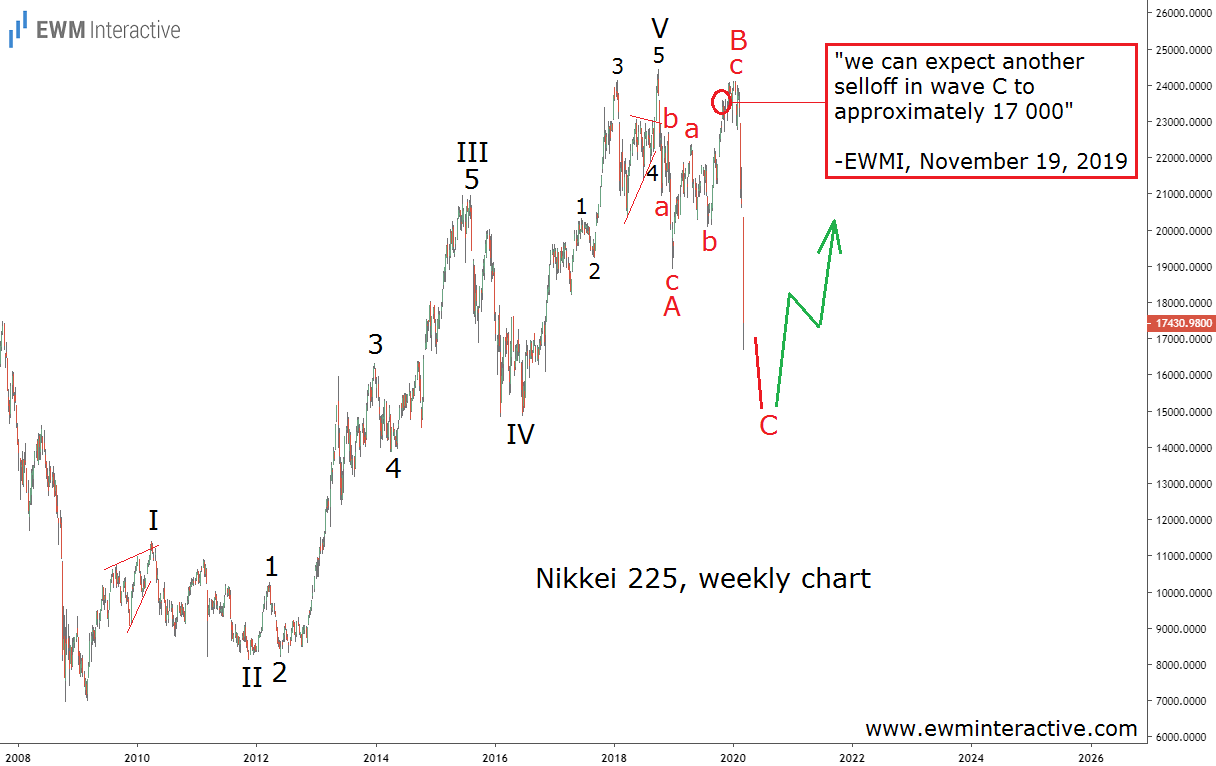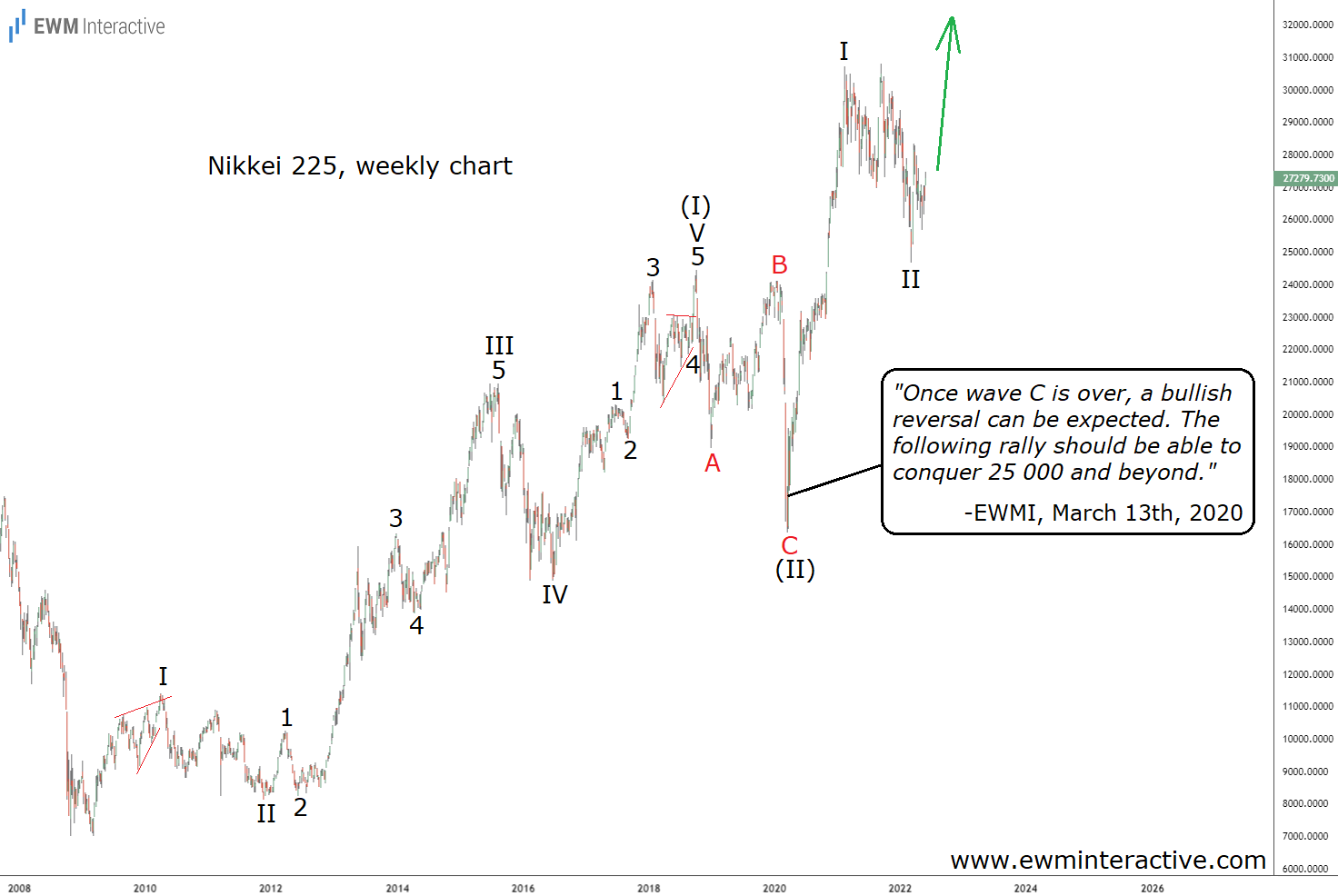The Japanese stock index Nikkei 225 has been following the Elliott Wave rules and guidelines quite nicely over the years. In October, 2017, we thought the fifth and final wave of its post-2009 uptrend was in progress.
A three-wave correction follows every impulse, so it made sense to expect a decline once it was over. Hence, we wrote that a bearish reversal can be expected near 24 000.
A year later, the index formed a top at 24 448. A notable decline did ensue, dragging the Nikkei below 19 000 in December 2018. It seemed a bit shallow compared to the prior uptrend, though.
It made sense for the retracement to evolve into an even bigger one. So in November, 2019, we wrote that the index “can lose 30% in the next corrective wave.” Hardly anyone had heard about COVID-19 at the time, but the wave structure was already pointing south.
In another great example of the Elliott Wave principle‘s ability to put investors ahead of the news, Nikkei fell to 16 358 on Mar. 19, 2020. Six days earlier, contrary to the prevailing doom and gloom, we shared the following bullish chart with our readers on Mar. 13.

At a time when the markets were ruled by sheer panic and the global economy was headed for a lockdown, we thought a buying opportunity was presenting itself.
The COVID selloff fit nicely into the position of wave C, thus completing the entire 5-3 wave cycle that began in 2009. According to the theory, the uptrend was supposed to resume soon.
In A Time Of Record Uncertainty, Nikkei's Elliott Wave Patterns Provided Guidance
This was the worst global pandemic in over a century. Needless to say, we had no idea how it was going to unfold. Fortunately, thanks to Elliott Wave analysis, at least we weren’t as clueless about the markets.
It first helped us avoid the crash and then managed to prepare us for the bullish reversal in the Nikkei 225.

Over two years later now, the feeling of panic that gripped investors in 2020 is largely forgotten. Most stock markets have now recovered to well above pre-pandemic levels.
The Nikkei 225 reached 30,796 in September, 2021, nearly doubling from its pandemic low. And while the war in Ukraine dragged it down a bit, the index is still some ~11 000 points higher than where it was in March, 2020.
Now, the Fed and other central banks have either already started raising interest rates or are preparing to do so soon in an attempt to tame inflation. The Bank of Japan, on the other hand, has shown no such intentions so far.
Interest rates are like gravity to asset prices. Higher rates mean lower stock market valuations, while lower rates push valuations up. Ultra low interest rates, given enough time, will eventually create a bubble.
Judging from the chart above, that is exactly what might be in store for the Nikkei 225. The stage seems set for another surge in wave III of (III), that can lift the index to a new all-time high in the years ahead.
